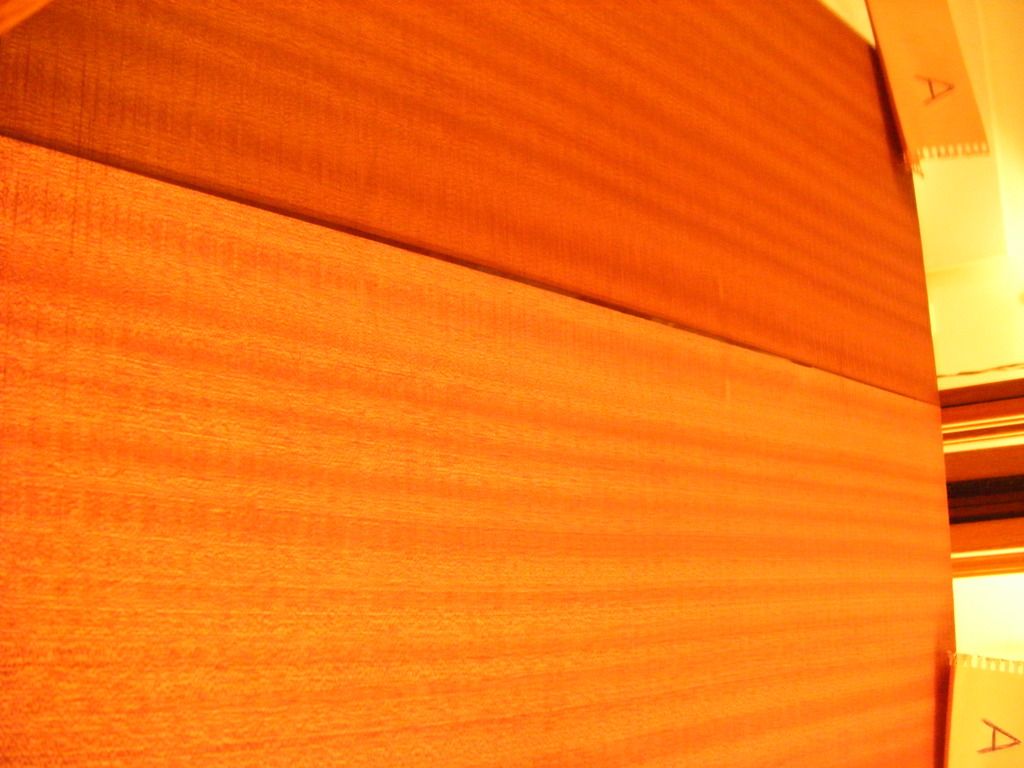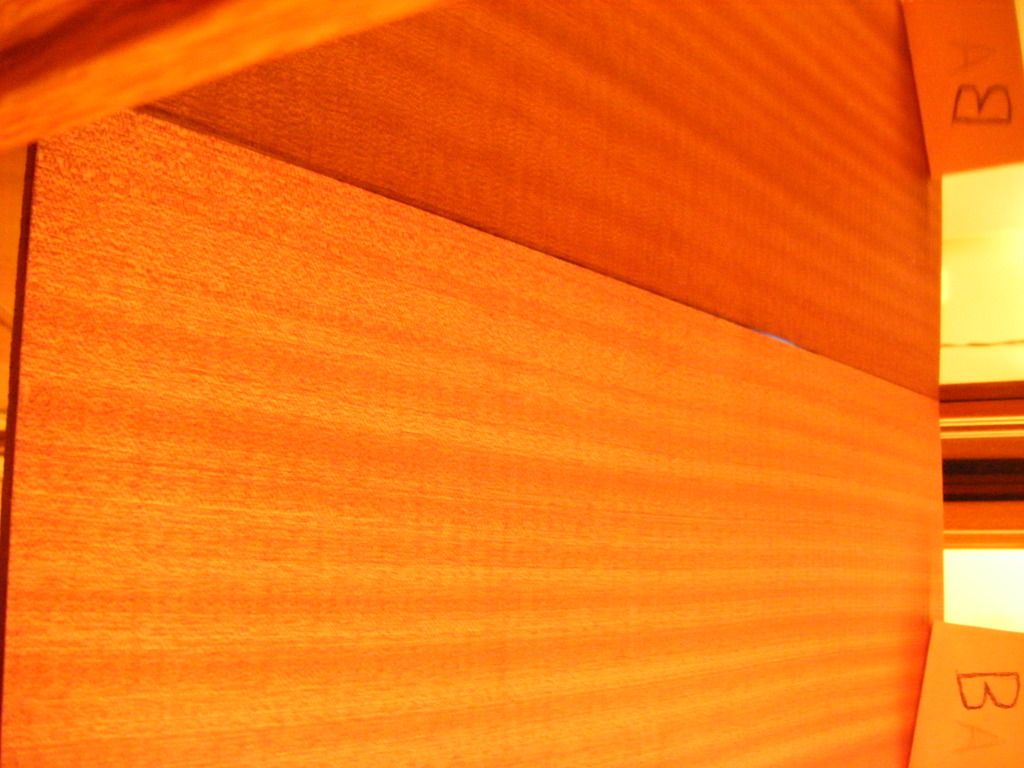
 |
|
#1
|
|||
|
|||
|
Hi to all,,
I am ready to join my first set of back plates (Sapele) and am stuck on which edges to join,, Is there an rule of thumb for grain orientation ,should the grain converge toward the join or move away from the join? the soundboard was clear where the grain was tighter,,but with this set ,not so sure, Do I just go with what i prefere the look of or is there a "correct" way ? the options,,A vs B   Am i over thinking this.. ? Any advice would be great as its my first build and am just finding my feet,,so apologies for the basic question,, thanks for your time,, cheers |
|
#2
|
|||
|
|||
|
It is generally a matter of personal preference.
Remember, if you use a plane for straightening the seams, plane so you don't dig into or rip-out the grain.
__________________
---- Ned Milburn NSDCC Master Artisan Dartmouth, Nova Scotia |
|
#3
|
|||
|
|||
|
Thanks for the advice Ned,
I am just going to use sandpaper stuck to spirit level,,,,it worked out well for the spruce top,but imagine it will take a bit more effort with hard wood,, |
|
#4
|
|||
|
|||
|
for me i will try to place any defects into areas that will be cut out. also i'll orient the halves so that the grain runout is aligned with each other. this is usually seen as half of the back or top looking darker or lighter then the other half depending upon how the light falls on it and how you are viewing it. i'm sure i don't have the right word for this:
not always a concern with woods that have interlocking grain like sapele or mahogany, etc.. but it is something to be aware of and is very noticeable on your typical top woods under finish. |
|
#5
|
|||
|
|||
|
You would require a fairly uniform and constant grain per inch count for this to work, as you would need to match the outside edge of one half to the inside edge of the other half ... I would imagine the lack of visible runout might more than compensate for the loss of grain symmetry, however.
Last edited by murrmac123; 03-11-2016 at 08:41 AM. Reason: clarification |
|
#6
|
|||
|
|||
|
Personally, I would choose B so that the knots fall out of the pattern. Unless there is a big difference in how quartered the grain is going across the panel...
|
|
#7
|
|||
|
|||
|
Thanks for all advice,
I had not even knoticed the knot,upon checking the joining edge you can see the knot on the edge,, I guess i wont be gluing that edge ,or would it be ok? Thanks for the spot B it is then,,which was my gut feeling visually ,, Cheers |
|
#8
|
|||
|
|||
|
The edge with the knot looks fine structurally. Again, aesthetics in this case.
__________________
---- Ned Milburn NSDCC Master Artisan Dartmouth, Nova Scotia |
|
#9
|
|||
|
|||
|
Quote:
Last edited by arie; 03-11-2016 at 02:32 PM. |
|
#10
|
|||
|
|||
|
Quote:
It's a case of deciding which is the lesser of two evils... as I said previously, if the grain count is uniform across the board, then the issue doesn't arise, but if the grain count does vary widely from the center to the outside (as is quite common) , then you do have what might be perceived as a problem. Last edited by murrmac123; 03-11-2016 at 05:51 PM. Reason: speling |
|
#11
|
|||
|
|||
|
Best is to try to avoid using pieces with severe run-out, then one doesn't have to worry about choosing run-out matching or grain spacing matching... ;-)
__________________
---- Ned Milburn NSDCC Master Artisan Dartmouth, Nova Scotia |
|
#12
|
|||
|
|||
|
As a result of the discussion about grain run out I have learnt alot,,
Always reading about runout but not exactly giving it much thought or understanding set about reading up on the subject , I now feel more knowledgeable about the wood we are dealing with, which is the name of the game and understand why 2 bookmatched halves can look different shades for example. Also it had never occured to me that it was an option to join plates with the non bookmatches edges to have the "shades" matching ,although I imagine it is more relevant to top woods where you could get away with it not looking odd symmetrically So I have gained more from my question than I had hoped for,,so thanks! |